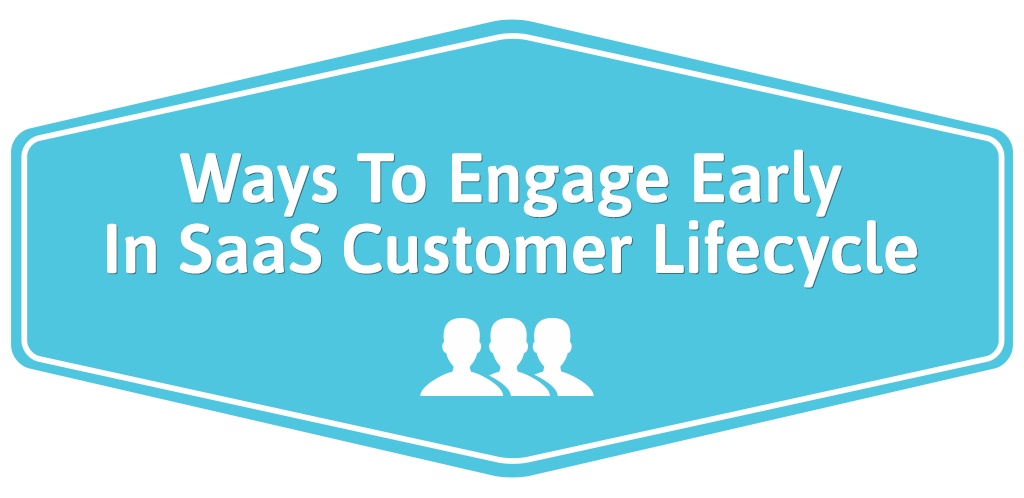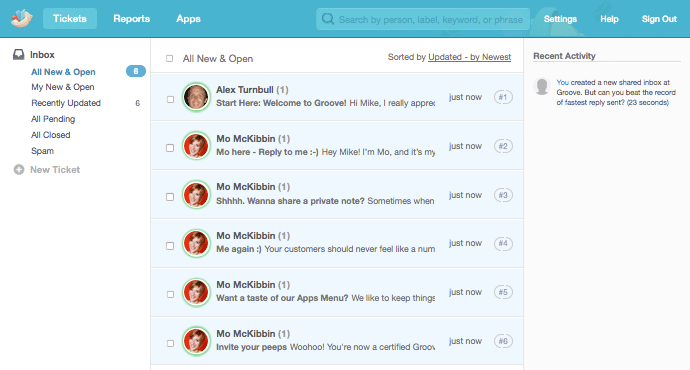
By now, if you’re a SaaS person, you’ve probably heard of customer success and its importance for reducing churn in your business.
SaaS are always looking for new and better ways to grow, while hanging on to the customers they’ve already managed to obtain. Thus, we have some emerging trends when it comes to customer success and dealing with customers who are in the early stages of their lifecycle with SaaS.
One of these is to engage earlier than was traditionally the case. If we look back a few years, customer success tended to be a reactionary measure, something to turn to when SaaS were experiencing more churn that they’d like.
Over time, it has become clear that customer success strategies work better if they’re not simply a reaction, but if they’re part of an overall strategic approach to managing customers. With this in mind, many SaaS are now turning to customer success principles earlier in the customer lifecycle; how can you engage with customers early?
#1. Early Customer Success Program
Ok, so we’ve established that customer success shouldn’t just be a reactionary strategy only implemented when you’re unhappy with churn rates or failure to upgrade to the next tier of service.
It makes sense to develop a clear, documented program early, including for those who are still early in the lifecycle—such as your freemium or free trial customers.
When we look at customer success for early lifecycle, Lincoln Murphy points out these activities which must happen:
- Making sure new signups successfully set up their account and see the value of your product.
- Converting trial users into paying customers.
New Sign-Ups
“The onboarding period is, for a business, perhaps the most critical time in a SaaS customer’s life.” Alex Turnbull, Groove.
Groove has a good system when it comes to getting new signups successfully set up and starting to use their software. First of all, customers will get a series of onboarding prompts in their inbox inside the program.

Source: Groove
Over time, Groove has found that free users who complete all of the prompts within 24 hours are almost 80 percent more likely to convert to paid users than those who don’t.
This is also reflective of another trend SaaS are adopting; offering superior self-service options to allow the customer to find the information they need at their own pace.
If you’re not providing clear “next steps” to your new sign ups, there’s a high chance you won’t see them successfully complete sign-up, yet there are still SaaS who barely go beyond a thank you page after sign up.
The message? Have a solid plan in place to drive activation of new accounts. Emails, live chat after sign-up, even phone calls. Don’t make the customer have to work hard to complete the process.
The Trial Experience
“The first in-app experience your customer has with your product sets the tone for your relationship, and if it’s confusing, overwhelming, or otherwise puts up barriers to achieving success (or at least recognizing the value potential in your product), you’re in trouble.” Lincoln Murphy.
Your aim for the customer trial experience should always be that they complete core tasks which allow them to make the most out of your app and that they see value from it. Value is going to depend on what their own desired outcomes are for using your app, but why not make it a mission of your customer success strategy to find out what that is?
Which core tasks do sign-ups need to complete during the onboarding process? Identify what these are and look for any part of your onboarding funnel where customers may be getting lost. Is there a way you can make the process more intuitive?
As Alex Turnbull points out, user testing may be the best way to figure out any of those sticking points. If you haven’t watched how a user other than your employees, colleagues, or friends uses your app, chances are you have blind spots which you could fix up. He suggests that even getting a user to talk you through how they use your app while sharing their screen with you is a good way to do this.
The point is that a good customer success strategy sees you getting involved and engaging with customers early. Help them to complete the core tasks which allow them to realize value from your app early.
#2. Customer Success Coaches
Another emerging possibility for garnering early engagement is hiring Customer Success Coaches who look after freemium or free trial customers. Most often, SaaS who have used coaches have been hiring them later on in the lifecycle. But, since onboarding is such a vital component of the whole process, many are bringing them in early.
Customer.io uses “concierge onboarding” (really another way of describing the coaching role). It started out as an experiment because their product is solving a “difficult” problem and they felt that customers needed more of a hand to get through onboarding. They wanted to learn how they could do better with onboarding and actually get customers using their product.
What they eventually found was concierge onboarding (including activities such as personally calling customers to learn why they signed on and how they can be helped), doubled their paid conversion rate. The result? Concierge onboarding is now there to stay.
It might seem like a bit of a stretch—especially if your SaaS is an early startup. But, that personal, one-on-one time with someone ensuring the success of the customer could make a big difference to your upgrade and retention rates. It’s about delivering a good experience early in the piece and actively engaging the customer.
#3. Tracking & Monitoring
“The most important two things I think you can do with client success are (x) hire early and (y) measure constantly.” Jason Lemkin
What does monitoring have to do with engagement? Well, you have to know how people are interacting with your product and where any issues lie if you want to improve the way you engage with them.
Which metrics are key around early engagement?
- Any metrics you have identified as critical to engagement, for example, mission critical steps the customer should have taken.
- The length of time of their first session. If you’ve found it should take ten minutes for them to set everything up properly and start to engage, but the average session length is two minutes, you may have a usability issues somewhere.
- The frequency and number of times a customer returns to your product.

Source: Totango
As Totango state: “How often a user returns to your service is a key reflection of the value they get from it.”
For those customers who you do find are not coming back and completing your onboarding process, you can always set up a tool such as Intercom.io to engage with them and encourage them to come back.
Final Thoughts
Your customer onboarding process and early lifecycle activities are some of the most mission-critical for your SaaS to achieve good growth and retention.
Customer success should not be left as a reactionary measure, but introduced earlier in the lifecycle so that your customers start to immediately derive value from your product.
Engaging early, whether by email, coaching or “concierge” phone calls, or other means is one of the best things your SaaS can be doing to ensure new sign-ups stick around. Determine your key metrics, keep a close eye on them, and be prepared to step in and make adjustments for any sticking points.
